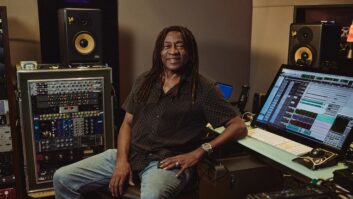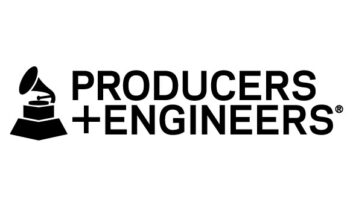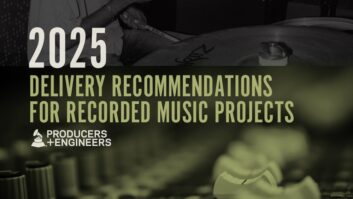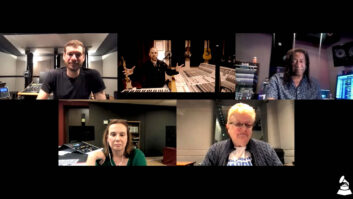
On June 1, Capitol Studios in Hollywood hosted a symposium on the status and future of Hi-Res audio. The event was sponsored by The Digital Entertainment Group (DEG), Universal Music Group (UMG), Sony Electronics and the Producers & Engineers Wing of the Recording Academy, and moderated by DEG Senior Director Marc Finer.
Producer and Blue Note Records President Don Was opened the day talking about Hi-Res audio’s ability to more closely reproduce the artist’s intentions—what was heard in the studio during the making of a record. “Our primary responsibility isn’t to blow people’s minds with how many high frequencies we can get through the tweeters,” he said. “It’s how we can utilize this technology to make sure people can get the emotional impact of the music.”
Finer noted that, as music reproduction has evolved from vinyl to CD to MP3, “Now we primarily have convenience driving the market. But with Hi-Res, we can give consumers better quality and no compromise in convenience,” with files available to play on mobile devices and easy downloading. Recent studies by the Consumer Technology Association, he pointed out, indicate that nearly half of music consumers were interested in Hi-Res audio, and that the deciding factor for whether they would subscribe to a streaming service would be sound quality, one as good as the recording studio experience.
More than 10,000 recordings are currently available from the three major label groups, Sony, Universal and Warner Music, through a dozen digital service providers in North America.
A panel, comprising Capitol Records A&R Executive VP Nate Albert, Universal Music Group’s VP of Technology & Production Jim Belcher, and the P&E Wing’s Managing Director Maureen Droney, discussed ways in which the recording industry has begun implementing Hi-Res into the recording and delivery workflows.
“For us in A&R,” noted Albert, “even the language of High Definition is just being reintroduced.” The goal, he says, “is authenticity—knowing that the fans can hear exactly what you’re hearing.”
UMG now requires artists and producers to submit their completed masters in Hi-Res, Belcher said, explaining that the minimum spec for Hi-Res audio is 48 kHz, 20-bit, extending all the way up to 192 kHz. “Releasing new albums and re-mastering older albums in Hi-Res is part of our standard process now,” Belcher said.
The Recording Academy has been developing production guidelines for its 6,500 producer and engineer members. “We undertook a study, and asked members and others if they were recording in Hi-Res,” Droney notes, “and many just said they really haven’t been thinking about it. Either that or they didn’t think there was anywhere for it to go—why bother to go to the extra trouble if there’s no market for it? So it’s an education process.” There was added resistance, she added, due to an unwillingness to spend additional money to upgrade recording systems for Hi-Res production, as well as the lack of favorite plug-ins that work in 96k/24-bit.
Sony demonstrated consumer products that can easily play downloaded Hi-Res files via USB thumb drive, to near-field players to mobile devices. Guests were also able to to hear samples of Hi-Res audio systems for automobiles in Sony’s demonstration vehicle.
The technology for delivering Hi-Res content via streaming services was discussed, including encapsulation encoding technologies, such as Meridian Audio’s MQA, which Universal has been evaluating over the past year and which Warner Music is supporting, Belcher said. “It’s a technique for folding down Hi-Res audio into a file that can be transmitted over a lower bandwidth. It’s exciting. It has the ability to remove some of the artifacts that have accumulated in a digital file, based on hardware.” There is essentially no additional cost in the production chain, he added. “We can go through our traditional studio process in PCM, for recording, mixing and mastering, and then, at the last phase, it would get encoded into MQA.”
The question of added-value content was raised, which, Belcher noted, “The people who are interested in buying Hi-Res music really want material such as liner notes and all of the ancillary information that is available for a recording. It helps them better enjoy the recording. They want to know who produced it, who played on a track. It’s important to them. So in the future, you’ll see a hybrid of Hi-Res audio tracks and context around it,” in the form of booklets or video. Added Droney, “We absolutely believe that the more context there is to music, the more value it has.”
In Capitol’s studio control rooms, Capitol engineer Steve Genewick walked visitors through various release iterations—from vinyl to two CD releases to AAC to Hi-Res transfer—of Frank Sinatra’s 1968 track, “What’s New” (which had been recorded at the studio) in Studio A. “The Hi-Res version clearly allows you to hear the depth of the recording, as much as on the original vinyl,” he pointed out.
Droney presented Capitol Studios and Mastering, now celebrating its 60th birthday, with the P&E Wing’s Certificate of Appreciation, given to Arthur (Art) Kelm, Vice President/General Manager/Chief Engineer, Capitol Studios; Paula Salvatore, Vice President/Studio Manager, Capitol Studios; and Patrick Kraus, SVP-Head of Studio, Production & Archive Services, Universal Music Group. “Premier among our partners are the great studios,” Droney shared. “They’re ground zero for education about best practices. Capitol Studios is clearly one of the jewels in the crown of the recording industry. They ensure that these studios always stay on the cutting edge, while also maintaining their historic legacy.”







